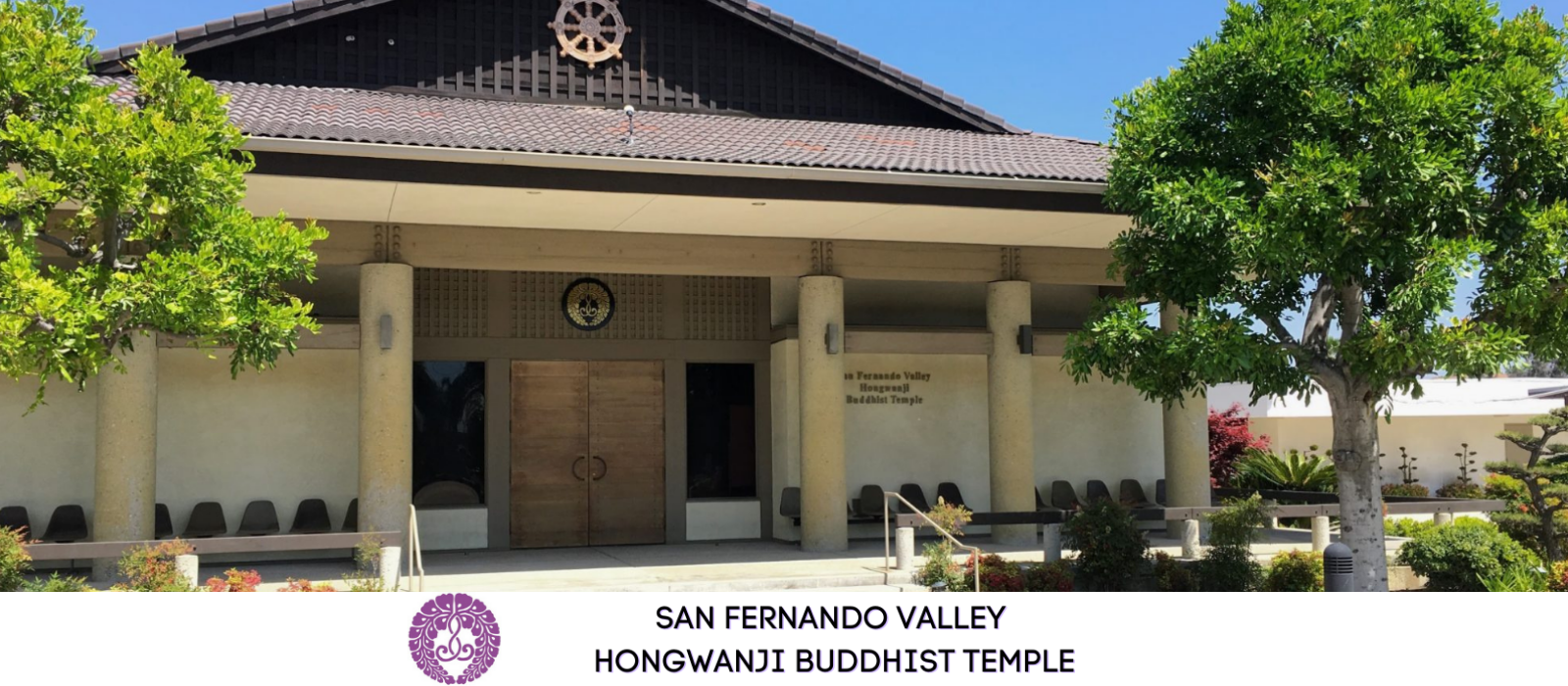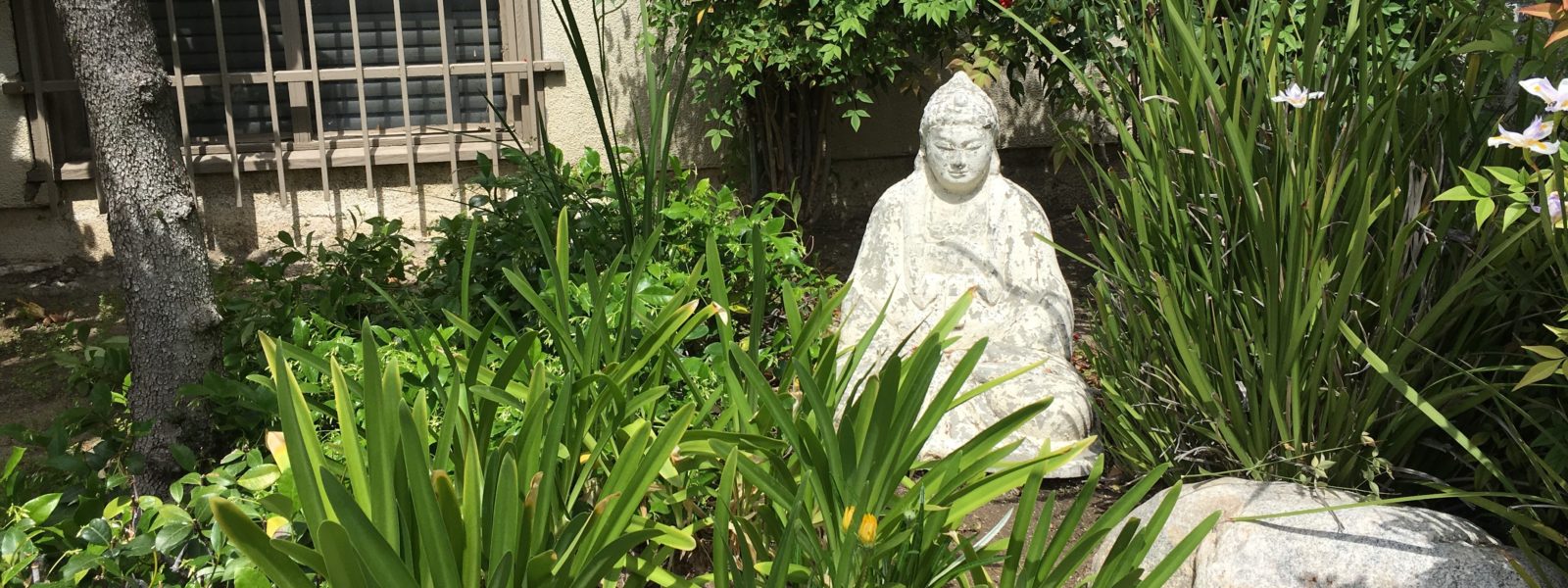Attitude of Gratitude
The temple, after all, is not a gas station where one fills up with spirituality for the rest of the week at so many cents per liter. It is a living organization, not a mechanical machine. For this reason, temple life is to be valued because it is not ‘business-like’, efficient or even useful. We need not make perfect manju to sell, because we are not in the manju business. Every helper, whether they are experienced or not, is able to help make manju. They donate their time for the sake of the temple. The temple is involved in the business of getting human beings to be more ‘truly human’, to get them to see who they truly are, what their true nature is and to be transformed by that Truth. To bend religion to suit our own needs is to miss the point of religion. Religion essentially transforms us to see the Truth. We are not here to transform religion to suit our needs.
By permission, Rev. Tatsuya Aoki, 2016 JSBTC Day – “What is Dana?”
Earlier this year, we had the opportunity to enjoy hearing the dharma from Rev. Tatsuya Aoki, Bishop of the Jodo Shinshu Buddhist Temples of Canada when he was our guest at Spring Ohigan. After I came across a recent article he wrote for the Canadian temples called “What is Dana?”, I read excerpts to our Board and was asked to share them here.
In reference to the passage quoted above, if being transformed to see the Truth sounds too difficult or lofty for us to fathom, perhaps we could ask why it is important to be able to see things (including ourselves) as they truly are. How does Truth transform our dukkha (suffering, dissatisfaction, frustration, struggle, etc.) regardless of the magnitude of discomfort? Whether we are vexed by the daily cares of modern life or facing major challenges, our teaching has been there for ordinary people through the ages.
Life in medieval Japan (1185-1600) was marked by poverty, starvation, warfare, persecution, and natural disasters. It is not a coincidence that many new schools of Buddhism, including Jodo Shinshu, flourished during this time as well. People were so grateful for a teaching that helped them to understand life and the meaning of their own lives by learning to reflect on their true nature and the interdependence of all life. Through this teaching, they acquired the strength and resilience to meet challenges and transcend them.
During Rennyo’s time, eight generations after Shinran, peasant farmers felt so empowered by the Nembutsu teaching that they rose up against the daimyo feudal lords and, for the first time in history, took control of their lands. This eventually led to Jodo Shinshu being banned far away in Kyushu, on pain of imprisonment, torture, or death. Still, “Kakure Nembutsu” followers practiced in secret, often hiding in caves, and some surreptitiously continued to send donations to the Hongwanji in Kyoto to ensure that the teachings would continue.
Many of the Japanese emigrants to Hawaii, the US Mainland, Brazil, and Canada brought their reliance on the Nembutsu teaching with them and empowered by this, were able to rise above daunting obstacles and move forward. People marvel at the resilience, inner strength, dignity and self-esteem shown by those who were discriminated against, unjustly incarcerated in camps, or otherwise persecuted. Though some wonder if this is simply Japanese character, the influence of our Buddhist teaching has proven over the centuries to be a major factor in the shaping of a valuable perspective grounded in seeing Truth-Reality.
Do people today need this sense of resilience and empowerment born of Infinite Wisdom and Compassion? Yes, more than ever before, if you witness the turmoil that still rages in our world and affects everyone. Even in our everyday lives, we all need help. Some, knowing that this teaching is priceless, spontaneously express their gratitude and appreciation for it. Like those who came before us, it is too precious to keep the benefits to ourselves. In the spirit of dana, we do what we can to ensure that the teaching will always be available. Yet truth be told, the future of many temples is precarious. In his article, Rev. Aoki explains:
In the early days, the temple was financed largely by donations called ‘dana’. In Japanese, this is known as ofuse or orei. Over the years, temple members established the tradition of donating money to the temple treasury for various occasions such as Buddhist holidays, family weddings, funerals, and memorial services. As well, donations were offered for monthly memorial services (Shotsuki) as well as, for a wide variety of occasions, such as a return to good health, birth of children and grandchildren, graduation of children and grandchildren and for joyous events including return from trips abroad, etc. In other words, the Issei tended to make donations to the temple on any occasion which they felt was meaningful to them. The idea of a membership due or fee was not a consideration.
… Relying entirely on personal donations meant no fixed fees for services rendered. As a member became more active and involved the more the member understood the ofuse/orei system. The prevailing attitude was, therefore, one of offering a donation as a token of one’s appreciation and gratitude, rather than one of paying a fee for specific services rendered.
As the nisei and sansei generation gradually took responsibility in managing the temple, the idea of membership dues became more popular. There was growing frustration not knowing how much one should donate for weddings, memorial services, etc. Thus, today we are torn between two ways of thinking; between the dana/ ofuse system and a set price system for services rendered. There has been reluctance in abandoning the ofuse system. To do so would reduce the temple to a place of business with set fees for individual services. The consequence of this would eliminate the spirit of dana, an important fundamental of Buddhist practice. In short, the difference between ofuse versus set fees is attitude. For buddhists, in particular Japanese buddhists, a person’s attitude in society has always been considered very meaningful and significant. There is a prevailing view that it is not the amount that is significant, but rather the spirit in which it is given. Therefore, a donation has no fixed amount but rather depends on what the giver wishes or can afford to give. This can be confusing to someone who is unfamiliar with the ways of the temple. And while it is not as efficient as a so-called “price list” it is in keeping with the spirit of dana.
Ofuse in Japanese consists of two Chinese characters. O-fu means “to spread”, and se means “giving charity”. Dana or ofuse gives one an opportunity to practice gratitude, which arises from the awareness of the inter-relationship of all sentient beings.
People have many reasons for being temple members but we should all realize that without supporting the religious purpose, there would be no reason to have a temple. The real tragedy is not that a temple would be lost, but that we could let our true treasure slip away.
As 2016 draws to a close, I would like to thank all of you for your dedication, hard work, and support. May you and yours be happy and well; may you awaken to the Light of Truth and find comfort and joy in the Immeasurable Compassion and Infinite Wisdom that is Amida. Namo Amida Butsu.
In gassho,
Rev. Patricia Usuki

